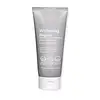What's inside
What's inside
 Key Ingredients
Key Ingredients

 Benefits
Benefits

 Concerns
Concerns

No concerns
 Ingredients Side-by-side
Ingredients Side-by-side

Water
Skin ConditioningPEG-6 Caprylic/Capric Glycerides
EmulsifyingPropanediol
SolventCaprylyl Glycol
EmollientEthylhexylglycerin
Skin ConditioningDisodium EDTA
Niacinamide
SmoothingAscorbic Acid
AntioxidantHydrolyzed Collagen
EmollientBisabolol
MaskingButylene Glycol
Humectant1,2-Hexanediol
Skin ConditioningCentella Asiatica Extract
CleansingAsiaticoside
AntioxidantMadecassic Acid
Skin ConditioningAsiatic Acid
Skin ConditioningMadecassoside
AntioxidantWater
Skin ConditioningMyristic Acid
CleansingGlycerin
HumectantPotassium Hydroxide
BufferingPalmitic Acid
EmollientStearic Acid
CleansingLauramide DEA
Potassium Cocoyl Glycinate
Cocamidopropyl Betaine
CleansingGlyceryl Stearate
EmollientBenzyl Glycol
SolventPEG-100 Stearate
Niacinamide
SmoothingPotassium Cocoate
EmulsifyingGlycyrrhiza Glabra Root Extract
BleachingSodium Chloride
MaskingPotassium Chloride
Butylene Glycol
Humectant1,2-Hexanediol
Skin ConditioningGlycol
HumectantGlycol Distearate
EmollientRaspberry Ketone
MaskingCarbomer
Emulsion StabilisingDisodium EDTA
Lauric Acid
CleansingEthylhexylglycerin
Skin ConditioningParfum
MaskingWater, Myristic Acid, Glycerin, Potassium Hydroxide, Palmitic Acid, Stearic Acid, Lauramide DEA, Potassium Cocoyl Glycinate, Cocamidopropyl Betaine, Glyceryl Stearate, Benzyl Glycol, PEG-100 Stearate, Niacinamide, Potassium Cocoate, Glycyrrhiza Glabra Root Extract, Sodium Chloride, Potassium Chloride, Butylene Glycol, 1,2-Hexanediol, Glycol, Glycol Distearate, Raspberry Ketone, Carbomer, Disodium EDTA, Lauric Acid, Ethylhexylglycerin, Parfum
 Reviews
Reviews

Ingredients Explained
These ingredients are found in both products.
Ingredients higher up in an ingredient list are typically present in a larger amount.
1,2-Hexanediol is a synthetic liquid and another multi-functional powerhouse.
It is a:
- Humectant, drawing moisture into the skin
- Emollient, helping to soften skin
- Solvent, dispersing and stabilizing formulas
- Preservative booster, enhancing the antimicrobial activity of other preservatives
Butylene Glycol (or BG) is used within cosmetic products for a few different reasons:
Overall, Butylene Glycol is a safe and well-rounded ingredient that works well with other ingredients.
Though this ingredient works well with most skin types, some people with sensitive skin may experience a reaction such as allergic rashes, closed comedones, or itchiness.
Learn more about Butylene GlycolDisodium EDTA plays a role in making products more stable by aiding other preservatives.
It is a chelating agent, meaning it neutralizes metal ions that may be found in a product.
Disodium EDTA is a salt of edetic acid and is found to be safe in cosmetic ingredients.
Learn more about Disodium EDTAEthylhexylglycerin (we can't pronounce this either) is commonly used as a preservative and skin softener. It is derived from glyceryl.
You might see Ethylhexylglycerin often paired with other preservatives such as phenoxyethanol. Ethylhexylglycerin has been found to increase the effectiveness of these other preservatives.
Niacinamide is a multitasking form of vitamin B3 that strengthens the skin barrier, reduces pores and dark spots, regulates oil, and improves signs of aging.
And the best part? It's gentle and well-tolerated by most skin types, including sensitive and reactive skin.
You might have heard of "niacin flush", or the reddening of skin that causes itchiness. Niacinamide has not been found to cause this.
In very rare cases, some individuals may not be able to tolerate niacinamide at all or experience an allergic reaction to it.
If you are experiencing flaking, irritation, and dryness with this ingredient, be sure to double check all your products as this ingredient can be found in all categories of skincare.
When incorporating niacinamide into your routine, look out for concentration amounts. Typically, 5% niacinamide provides benefits such as fading dark spots. However, if you have sensitive skin, it is better to begin with a smaller concentration.
When you apply niacinamide to your skin, your body converts it into nicotinamide adenine dinucleotide (NAD). NAD is an essential coenzyme that is already found in your cells as "fuel" and powers countless biological processes.
In your skin, NAD helps repair cell damage, produce new healthy cells, support collagen production, strengthen the skin barrier, and fight environmental stressors (like UV and pollution).
Our natural NAD levels start to decline with age, leading to slower skin repair, visible aging, and a weaker skin barrier. By providing your skin niacinamide, you're recharging your skin's NAD levels. This leads to stronger, healthier, and younger looking skin.
Another name for vitamin B3 is nicotinamide. This vitamin is water-soluble and our bodies don't store it. We obtain Vitamin B3 from either food or skincare. Meat, fish, wheat, yeast, and leafy greens contain vitamin B3.
The type of niacinamide used in skincare is synthetically created.
Learn more about NiacinamideWater. It's the most common cosmetic ingredient of all. You'll usually see it at the top of ingredient lists, meaning that it makes up the largest part of the product.
So why is it so popular? Water most often acts as a solvent - this means that it helps dissolve other ingredients into the formulation.
You'll also recognize water as that liquid we all need to stay alive. If you see this, drink a glass of water. Stay hydrated!
Learn more about Water